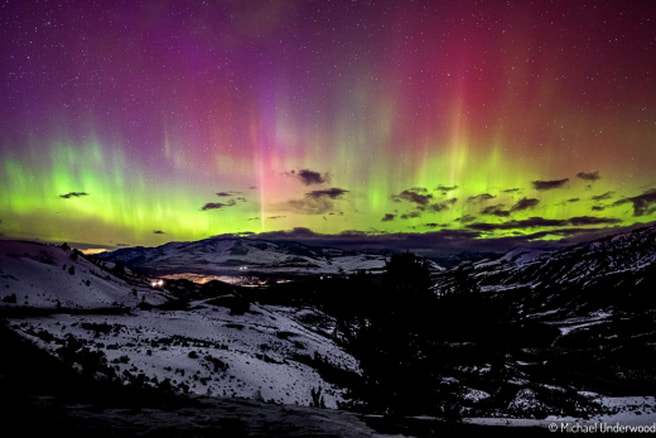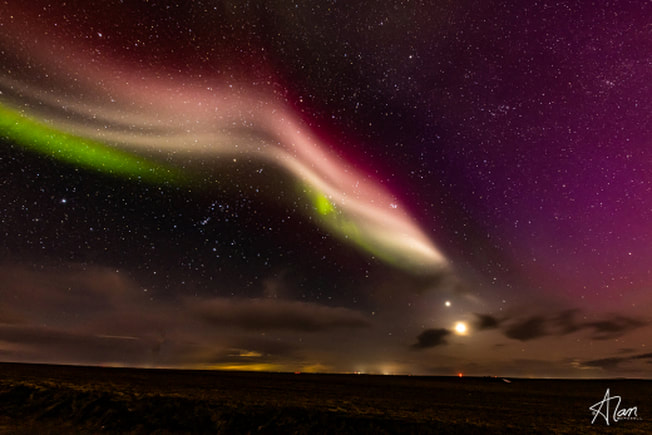SEVERE GEOMAGNETIC STORM: On March 23-24, auroras spread into the United States as far south as New Mexico (+32.8N) during a severe (category G4) geomagnetic storm--the most intense in nearly 6 years. The cause of the storm is still unclear; it may have been the ripple effect of a near-miss CME on March 23rd.
"For about 30 minutes we watched as auroras danced and simmered in the sky above Yellowstone National Park", says Michael Underwood, who photographed the light show from the Mammoth Hot Springs at latitude +45 degrees:
Other notable mid- to low-latitude sightings were made in Virginia (+38.7N), Colorado (+40.4N), Missouri (+40.2N), Colorado again (+40.6N), Nebraska (+42.4N), Nebraska again (+41N) and North Carolina (+36.2N). More than half of all US states were in range of the display.
Not every light in the sky was the aurora borealis. There was also STEVE. Alan Birdsell photographed the phenomenon from Spokane, Washington:
STEVE (Strong Thermal Emission Velocity Enhancement) looks like an aurora, but it is not. The phenomenon is caused by hot (3000°C) ribbons of gas flowing through Earth’s magnetosphere at speeds exceeding 6 km/s (13,000 mph). These ribbons appear during strong geomagnetic storms, revealing themselves by their soft purple glow. STEVE also appeared over South Dakota, Washington State, Idaho, Idaho again, Montana, Montana again, and Scotland.
This remarkable and surprising storm began on March 23rd when magnetic fields in the space around Earth suddenly shifted. In the jargon of space weather forecasting "BsubZ tipped south". South-pointing magnetic fields can open a crack in Earth's magnetosphere and indeed that's what happened. Earth's "shields were down" for almost 24 hours, allowing solar wind to penetrate and the storm to build to category G4.
These developments may have been caused the close passage of an unexpected CME. The storm cloud could have left the sun on March 20-21 when SOHO coronagraph data were unusually sparse. We didn't know it was coming. For aurora watchers, it was a welcome surprise.
www.spaceweather.com


 RSS Feed
RSS Feed